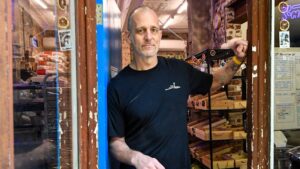
After the collapse of the REDcycle soft plastic recycling program nearly three years ago, Australians have faced significant challenges in recycling soft plastics. However, a new wave of initiatives by supermarkets and local councils is attempting to address this issue. With local recycling capacities gradually increasing, the question remains: Can these efforts keep pace with Australia’s soft plastic consumption without exacerbating waste problems?
Currently, over 500 Woolworths, Coles, and Aldi stores in New South Wales and Victoria have begun accepting soft plastics from local shoppers. This initiative, spearheaded by the Soft Plastics Taskforce established by the three supermarket chains following REDcycle’s demise, is set to expand to parts of southeast Queensland, the ACT, and Adelaide within the next year. However, regions such as Tasmania, the Northern Territory, and Western Australia are not yet included in these plans, as collection in these areas is deemed unfeasible at present.
New Initiatives and Challenges
The Australian Competition and Consumer Commission has recently proposed a product stewardship scheme to manage soft plastics recycling. This voluntary scheme, operated by Soft Plastics Stewardship Australia (SPSA), will collect levies from supermarkets and other plastic producers to fund critical segments of the recycling chain. Barry Cosier, co-CEO of SPSA, likened their role to a “dating service for the supply chain,” facilitating connections between producers and recyclers.
In addition to the taskforce efforts, SPSA is conducting kerbside recycling trials in nine councils across South Australia, Victoria, and New South Wales. Residents in these areas can participate in pilot programs where soft plastics are collected directly from their recycling bins. Other councils have independently initiated similar schemes, though options remain limited for those outside these trial zones.
Processing and Recycling Techniques
Once collected, soft plastics are typically processed by local third-party sorters and recyclers. For now, they are mainly converted mechanically—through shredding, grinding, or melting—into lower-grade plastics used in products like road asphalt and park benches. While it is technically feasible to chemically recycle soft plastics back into new materials, this process is complex and costly.
“It’s a really long supply chain, but that’s the only way you can get packaging back into food-grade packaging,” Mr. Cosier explained.
The lack of “end markets” for recycled content remains a significant barrier, with low demand for materials made from recycled plastics. It is often cheaper to produce new plastics from petrochemicals, particularly for food and medicine packaging. Mr. Cosier and other experts suggest that government-enforced standards for incorporating recycled materials could boost demand.
Expert Opinions on Regulation and Market Dynamics
Anya Phelan, a researcher in innovation at Griffith University, emphasized the importance of mandatory recycled content standards to enhance recycling efforts. She warned that voluntary schemes risk allowing businesses to benefit from improved recycling without contributing financially, leading to uneven coverage across Australia.
“At the moment, everything is very metro-centric, and it’s not fair to other regions that don’t have recycling,” Dr. Phelan noted.
Simran Talwar, a researcher in the circular economy at the University of Technology Sydney, also highlighted the need for comprehensive regulations that consider the entire lifecycle of materials. She argued that while soft plastic is highly recyclable, its use should be justified by necessity and functionality.
“There is no regulation around where and when these materials need to be used. That is a big part of the problem,” Dr. Talwar said.
The Future of Soft Plastics Recycling in Australia
According to the Australian Packaging Covenant Organisation, approximately 546,000 tonnes of flexible plastic entered the Australian market in 2022–23, yet only 6% was recycled. Dr. Phelan expressed skepticism about Australia’s capacity to recycle all soft plastics, citing the substantial gap that needs bridging to achieve significant progress.
“Achieving 100% circularity is unrealistic in the near term,” she stated.
Nonetheless, there is potential for improvement. A more effective recycling system would feature nationwide coverage, greater transparency for consumers, and mechanisms to penalize non-compliant plastic producers. Dr. Talwar emphasized the importance of regulations that address production as well as waste management.
“When we think about circularity, it is often what can we do with the material that’s already there, and what are the best end uses for that material,” she explained.
While the path to solving Australia’s soft plastics problem is complex, the current initiatives represent a crucial step forward. Continued efforts to refine recycling processes, coupled with robust regulatory frameworks, could pave the way for a more sustainable future.







